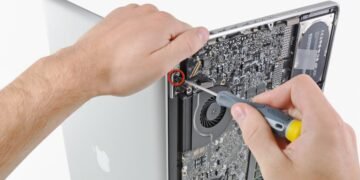We need to be familiar with the most basic medical supplies such as needles and syringes post this pandemic era. It has become crucial to learn how to administer medications to understand the numerous types of needles. Moreover, every person should take a crash course in personal safety and first aid for themselves and their families.
Learning medical administration becomes vital when having a pre-existing medical condition or caring for relatives or friends who have co-morbidities. However, some medical specialists give home prescriptions for patients who require vitamin B12 shots, insulin injections, epinephrine, fertility meds, or cancer therapies.
You must understand and practice how crucial medical equipment is, including something as simple as a syringe. And to do so, you must be familiar with the many sorts of needles used to deliver the injection. It’s essential to use the proper needle and medical syringe. Also, You must ensure that you receive the precise amount of medication as advised by your healthcare professional.
For example, suppose you need to inject yourself with approximately 3 ccs of medicine using a syringe. You must select the appropriate needle and fill the syringe with the proper amount of treatment to not have to reinject yourself.
A Practical Guide For Needle Users
Needles and sterile syringes come in sealed packages. They may or may not be available separately. You may always ask your doctor or a nurse for instructions on administering the injection yourself. Inquire about the type of needles you’ll need to utilize.
They are available in sizes ranging from as little as a 27 gauge unit (0.42 mm) to as large as 14 gauge (1.83 mm). Moreover, you can distinguish them based on color, with different hues denoting different hole sizes.
The significance of length and gauge
People must pick a length and gauge that they are comfortable with regarding clothing size. According to the evidence, a person’s size does not affect the efficacy of insulin injections or the possibility of insulin leakage when we utilize shorter needles. Furthermore, skin thickness is unlikely to differ much from one individual to another.
According to research published in 2020, people are more likely to prefer using shorter needles than longer ones. It may be preferable for people to utilize needles ranging from 4–8 mm in length in most circumstances.
Thinner needles, which are often more straightforward to use than thicker needles, may also be preferred by certain people. According to a 2015 research, smaller needles are often less uncomfortable and simpler to insert than thicker ones.
Even though it is critical for patients to use a suitable needle, they must also utilize the proper technique to deliver the insulin and rotate injection sites correctly to maintain their blood sugar and avoid any consequences.
How to safely administer insulin?
Since digestive enzymes break down insulin in the body, a subcutaneous injection is required to transfer the insulin to the layer of fat just under the skin surface. The insulin may then be absorbed steadily into the circulation, where it circulates to all of the cells in the body, resulting in weight loss.
Follow the below given steps to draw insulin from an insulin vial into a 3ml syringe or 5 ml syringe:
- Gather supplies: After cleaning their hands, the individual should obtain a new needle and an insulin vial. While ensuring they have the correct type of insulin, they may also make sure the insulin is up to date and does not contain any particles. They may need to mix the insulin gently.
Sterilize the vial by wiping the top with an alcohol swab upon removing its protective covering.
- Fill the vial with insulin
You can prepare a syringe in several ways: Take off the cap of the needle, and pull the plunger back to the appropriate dose for the individual. Insert the needle through the vial’s rubber top and press the plunger to inject air into the vial. Turning the bottle and syringe down while leaving the needle in the vial is recommended. Pulling the plunger will allow you to take the chosen dosage.
- Checking the syringe for bubbles: Before withdrawing the needle from the syringe, a person should inspect it for bubbles. To remove bubbles from the solution, tap the side of the syringe until the bubbles float to the surface. Then, using the plunger and drawback, push the bubbles out of the syringe until the right dose is in the syringe.
- Removing the needle from the vial: Ensure that the needle does not contact anything before injecting.
Summary
Insulin injections are required for persons with diabetes to preserve their health. For many people, administering insulin using a needle and syringe is convenient and cost-effective.
The syringe and needle size can significantly impact how well they manage their comfort and blood glucose levels for people who routinely inject insulin. If patients have any questions or concerns regarding needle size or technique, they should speak with their diabetes care team.







































































